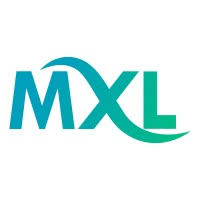
Robinjasper1109
Uploaded on Oct 21, 2025
For Learning and Development (L&D) professionals, the demand for training that is instant, effective, and flexible has never been higher. In sectors ranging from tightly regulated Banking and Insurance to field-intensive Mining and Oil and Gas, the traditional classroom model is obsolete. Microlearning is the recognized solution, but simply chopping up old PowerPoint decks is a recipe for failure. Achieving true microlearning success—meaning training that drives tangible business results—requires a structured, strategic approach. This six-step blueprint is designed to guide L&D professionals in building, scaling, and validating a world-class microlearning ecosystem that delivers real ROI. Step 1: Define the Atomic Learning Unit The foundation of microlearning success lies in defining the atomic unit of knowledge. L&D teams must shift their mindset from "What is the shortest way to cover this topic?" to "What is the singular, actionable objective a learner must achieve?" Each module, regardless of whether it’s delivered via a Microlearning Application or a desktop browser, must focus on one specific skill or piece of information. For example, a major product launch in Pharma should be broken down into dozens of distinct Microlearning Courses: one snippet on "Adverse Event Reporting Protocol," another on "New Dosage Guidelines," and a third on "Target Patient Profile." This focus prevents cognitive overload and ensures knowledge is instantly retrievable and applicable. Step 2: Select the Right Tool Stack The modern microlearning initiative demands specialized technology. L&D must move beyond generic tools and invest in a strategic technology stack composed of three core elements: Creation: Adopt powerful Microlearning Authoring Tools or integrated Microlearning Software. These are the engines that turn raw information into engaging content formats (interactive quizzes, short videos, simulations). Delivery: Deploy a robust Microlearning Platform and a dedicated Microlearning LMS. This hub manages deployment, user access, and content organization across all devices and departments. Accessibility: Ensure your content is mobile-first. A frictionless Microlearning Application is non-negotiable for employees in sectors like Retail who need on-the-floor training or Health care workers who need quick procedural refreshers. Step 3: Leverage AI for Scalability Content creation is often the biggest bottleneck for L&D. Modern solutions overcome this through automation and intelligence. This is where the power of the AI-powered Authoring Tool comes into play. This technology can analyze existing long-form content—such as a large safety manual in Mining—and automatically suggest or draft initial Microlearning Courses, significantly accelerating the speed at which you can roll out high-volume training. By freeing up L&D teams from manual content formatting, they can dedicate more time to instructional design and engagement strategies. Step 4: Implement Personalized Learning Journeys Generic training is ineffective. The true competitive edge of a modern L&D team comes from personalized delivery, powered by data. Implement an AI-Powered Learning Platform to manage your content. This system should analyze each employee's role, geographical location, performance data, and past learning history to create adaptive pathways. For a global organization in Oil and Gas, this means the platform automatically serves a new equipment maintenance module only to relevant field engineers, maximizing relevance and minimizing wasted training time. This personalized approach is the hallmark of successful Microlearning Platforms. Step 5: Design for Active Recall and Engagement Microlearning must be active, not passive. L&D professionals need to integrate design principles that force the learner to retrieve information frequently. This includes short, scenario-based quizzes, frequent flashcard drills, and immediate, contextual feedback. Instead of a final exam, successful programs use "spaced repetition," scattering quick knowledge checks throughout the employee's workflow over several weeks. For Finance or Insurance teams needing continuous updates, this spaced practice helps move knowledge from short-term memory into long-term competence, ensuring compliance information is recalled accurately under pressure. Step 6: Measure Competence and Business Impact The final step is proving the value of your work. L&D must shift from reporting on completion rates to demonstrating business impact (ROI). Use the advanced analytics tools within your Microlearning Platform to correlate training data with performance metrics: Did the safety micro-modules for Mining reduce incident reporting over the last quarter? Did the product knowledge snippets for Retail increase average transaction value? Did the compliance courses for Banking decrease procedural errors? By following this six-step blueprint—from defining atomic units and selecting the right Microlearning Tools to leveraging AI and measuring competence—L&D professionals can confidently transform their function into a core driver of organizational agility and success.

Comments